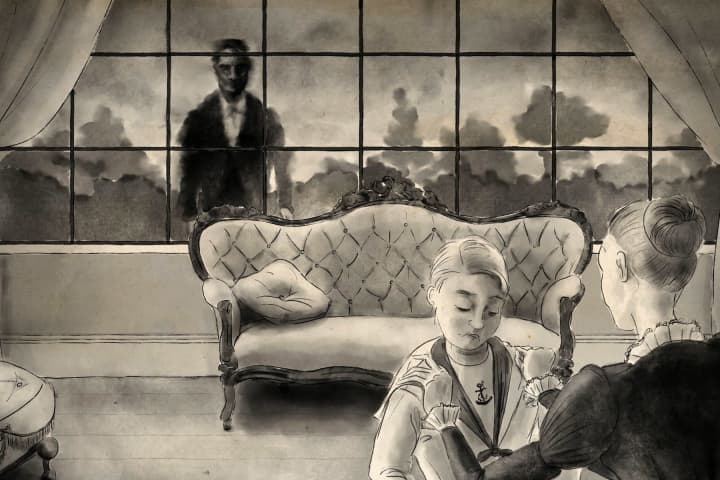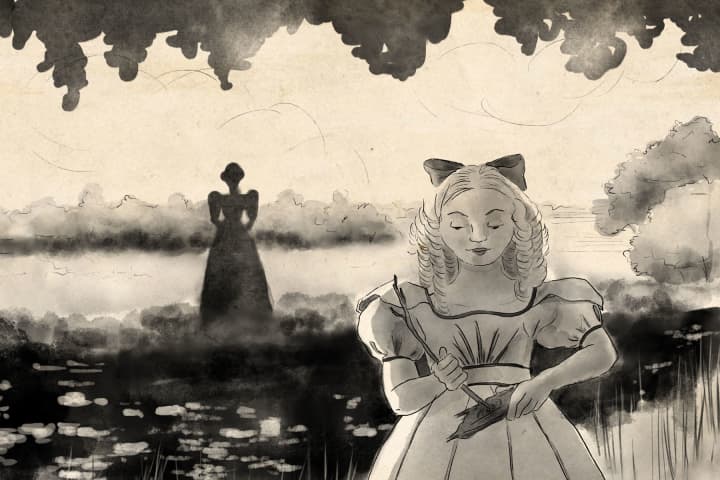Clemence Williams is an MTC Women in Theatre Program alumna, who studied at the Sydney Conservatorium and NIDA before moving to Melbourne in 2018. She is a stage director as well as a composer, and for MTC she has designed sound for Arbus & West, Heisenberg and Torch the Place. Working on a purely aural project, however, forced her to morph her theatre language into something more cinematic.
As composer and sound designer for this project, what did your role encompass?
Approaching the sound design and composition for The Turn of the Screw was a fascinating process. Director Sarah Goodes and I had to morph our theatre language to the dark magic of the aural. That said, even in theatre, all of my job is about listening. It’s about supporting a story and helping it shift where necessary or hang in points of tension.
This particular process involved a few days of rehearsal, a few of recording and then lots and lots of listening back to the recordings. In many ways, the process was more filmic – in that there was far more editorial room in the latter end of the process. So in short, I cut together all the best bits of the recording, had a big long listen and then wrote some subtle but present underscoring to accompany the spooky tale.
Can you talk a bit about the difference between designing sound effects for a visual world versus those just for the aural world?
The challenge and beauty of working in a purely aural world is that you are inviting the audience to imagine the visual. The dialogue in both instances remains the same, but as the composer you must guide the audience to notice the presence of the ghost in the window. You’re letting them know something isn’t quite right without overstating it. In many ways, it appeals to the gut instinct, rather than the logic of a situation. A bump in the night is much scarier when we can’t see where it came from.
Ghost stories require a certain eeriness that an audio-only environment is, arguably, ideally suited. How did you approach this? Did you draw on any particular influences?
Solo string sustained notes are a classic for a reason – they work. If Hollywood has told us anything, it’s that when you hear them start to play, lock yourself in your room and don’t answer the door!
‘...having the story so thoughtfully and meticulously read to me by some of the best actors in the country is the icing on the Henry James cake.’
From this simple starting point and in cooperation with Sarah, it was possible to build some melodic themes or leitmotifs for the piece. Among these were a Peter Quint theme, an angelic children theme and a theme for the depictions of landscape.
Sarah Goodes talked a bit about the fear existing in the silences, of allowing those gaps in the sound design. How do you find working with such restraint?
The other key to building spookiness in this play was about framing silence. It was about creating music and ambience that we barely noticed until it was gone, and we were unwittingly left alone. The more I work, the more I realise that less is more. While the artist’s ego in me wants to write a full orchestra score, that’s not what the work needs.
Are you a fan of the genre? What’s your favourite horror film or scary story?
Like many of my peers, I have quite the overactive imagination so I find horror almost unbearable a lot of the time. The scariest I go is the comedy classic Hocus Pocus featuring the one and only Bette Midler. That said, I am a fan of the strange and obscure – I can’t go past Bernard Herman’s work in the Hitchcock classics. Their work possesses you in this kind of inescapable hypnotic trance.
Were you familiar with Henry James’s work beforehand, or did this project introduce you to the world of American Gothic fiction?
I actually studied this text in high school as well as Britten’s opera version when I was doing my bachelors degree in music. So I’ve had quite the relationship with it through my life thus far. I have to say, having the story so thoughtfully and meticulously read to me by some of the best actors in the country is the icing on the Henry James cake.
How did you find the overall experience? What was challenging, what was freeing for you?
Working on The Turn of the Screw, and also the overall MTC Audio Lab theme music, was a welcome distraction to the lockdown. It’s been a hard year for so many people – with the arts of course being one of the hardest hit industries – so being given the opportunity to make something in spite of it all was a real lifesaver.
I miss my industry, I miss my colleagues, I miss my friends. I’m looking forward to the time when we can head back into the theatre.
You can listen to all three episodes of The Turn of the Screw on Apple Podcasts, Google Podcasts, Spotify or on the MTC Audio Lab page.
MTC’s Women in Theatre Program is generously supported by the Women in Theatre Giving Circle.
Published on 12 August 2020





